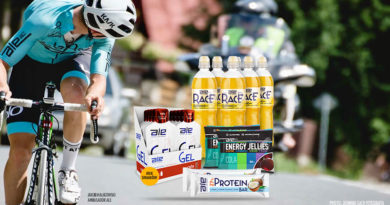Top Tips for Cold Water Dips
The Royal National Lifeboat Institution (RNLI) is the charity that saves lives at sea. 24 hours a day, 365 days a year, lifeboat crews around the UK and Ireland are ready to launch to help those in need. But it’s not just lifeboats. RNLI lifeguards patrol 248 beaches across the UK and Channel Islands, keeping people safe, providing safety advice and rescuing those in trouble.
According to the RNLI, Covid-19 restrictions and the closure of indoor swimming pools have encouraged huge numbers of people to take to the sea and rivers to try open water swimming. Many first-time swimmers have continued to swim as the temperature has dropped and seas have become ‘more challenging’. The organisation said swimmers have recently drowned in open-water prompting the release of a new safety video aimed at people who are new to the activity, encouraging people brave enough for a cold-water dip to enjoy our coastal waters safely.
The top tips within the video are not just for those new to open water swimming it applies to everyone entering cold water this winter,
RNLI Head of Water Safety Gareth Morrison said:
“There are very well-documented physical and mental health benefits of swimming in the sea, but it can also be very dangerous if you are unaware or under-prepared…The purpose of this video is to help you enjoy it safely.”
The RNLI’s key safety advice for taking a winter dip is:
- Don’t swim alone – always go with someone else to a familiar spot
- Always check the weather forecast, including tide information and wave height
- If in doubt, stay out – there is always another day to go for a swim
- Take plenty of warm clothes for before and after your dip, along with a hot drink to help you warm up again when you come out of the water
- Wearing a wetsuit will help increase your buoyancy and reduce the chances of suffering cold water shock
- Be seen – wear a brightly coloured swim cap and consider using a tow float
- Acclimatise to the water temperature slowly – never jump straight in
- Stay in your depth and know your limits
- If you get into trouble remember FLOAT to live by leaning back in the water, extending your arms and legs, and resisting the urge to thrash around to gain control of your breathing
- Take a mobile phone in a waterproof pouch
- If you or someone else is in trouble call 999 or 112 and ask for the Coastguard
The Royal National Lifeboat Institution runs solely on voluntary donation and receives no Government funding. Most of the members of its lifeboat crews are unpaid volunteers. It has 238 lifeboat stations and operates 444 lifeboats. RNLI Lifeguards operate on more than 200 beaches. Every year, their volunteer lifeboat crews and lifeguards help and rescue thousands of people and have saved over 143,000 lives since 1824. Countless more lives are saved through their youth education and water safety work.
Watch how a routine rescue turns into a race against time for the lifesavers at Weston-super-Mare on the side of the Bristol Channel – when every second counts!
So, what percentage of donations go to lifesaving activities?
For every £1 donated, 87% (87p) is used to fund RNLI lifesaving activities. The remaining 13% (13p) is used to generate funds so that we can continue to save lives at sea for years to come.
Every £1/€1 you donate will help them weather the storm and make a lifesaving difference.
*To donate go to: RNLI’s website





